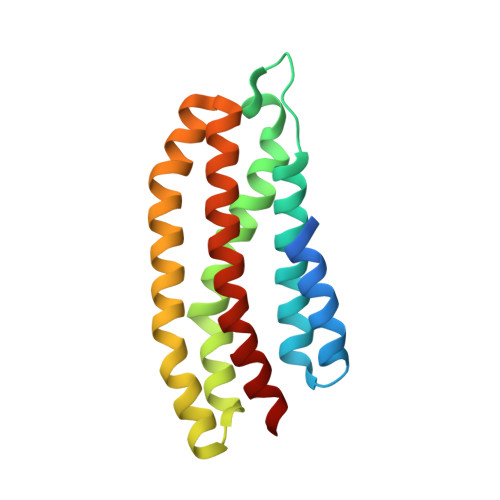Structural basis for the sequestration of the anti-sigma (70) factor Rsd from sigma (70) by the histidine-containing phosphocarrier protein HPr.
Park, Y.H., Um, S.H., Song, S., Seok, Y.J., Ha, N.C.(2015) Acta Crystallogr D Biol Crystallogr 71: 1998-2008
- PubMed: 26457424
- DOI: https://doi.org/10.1107/S1399004715013759
- Primary Citation of Related Structures:
4XWJ - PubMed Abstract:
Histidine-containing phosphocarrier protein (HPr) is a general component of the bacterial phosphoenolpyruvate:sugar phosphotransferase system (PTS) involved in the phosphorylation-coupled transport of numerous sugars called PTS sugars. HPr mainly exists in a dephosphorylated form in the presence of PTS sugars in the medium, while its phosphorylation increases in the absence of PTS sugars. A recent study revealed that the dephosphorylated form of HPr binds and antagonizes the function of the antisigma factor Rsd. This anti-sigma factor sequesters the housekeeping sigma factor σ(70) to facilitate switching of the sigma subunit on RNA polymerase from σ(70) to the stress-responsive sigma factor σ(S) in stationary-phase cells. In this study, the structure of the complex of Rsd and HPr was determined at 2.1 Å resolution and revealed that the binding site for HPr on the surface of Rsd partly overlaps with that for σ(70). The localization of the phosphorylation site on HPr at the binding interface for Rsd explains why phosphorylation of HPr abolishes its binding to Rsd. The mutation of crucial residues involved in the HPr-Rsd interaction significantly influenced the competition between HPr and σ(70) for binding to Rsd both in vitro and in vivo. The results provide a structural basis for the linkage of global gene regulation to nutrient availability in the external environment.
Organizational Affiliation:
Department of Biological Sciences and Institute of Microbiology, Seoul National University, Seoul 151-742, Republic of Korea.















